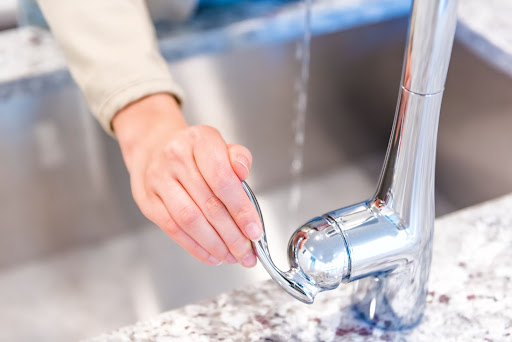
How To Fix Water Pressure In Kitchen Sink
Are you frustrated by the slow flow of water in your kitchen sink? Whether you’re washing dishes or filling up a pot, low water pressure can be a significant inconvenience. In this comprehensive guide, we’ll explore the various reasons behind low water pressure and provide practical solutions to help you fix it. From clogged faucets to pressure regulators, we’ve got you covered.
Understanding the Issue: Low Water Pressure in Kitchen Sink
Low water pressure in the kitchen sink can manifest in different ways. The water stream might be weak, or it may take longer to fill a container. Let’s delve into some common reasons behind this issue:
- Clogged Aerator: A clogged aerator is a frequent culprit for low water pressure. It often contains mineral deposits or debris that hinder water flow.
- Water Supply Problems: Sometimes, the problem is external. Check if other faucets in your home also have low water pressure. If they do, it’s likely a water supply issue.
- Pipe Obstructions: Blockages or mineral buildup within the pipes can restrict water flow. This issue may require professional assistance.
- Pressure Regulator: Your home might have a pressure regulator that requires adjustment.
- Leaking Pipes: Leaks within your plumbing system can result in low water pressure. Inspect your pipes for any signs of leakage.
How to Fix Low Water Pressure in Kitchen Sink
Cleaning or Replacing the Aerator
A quick remedy for low water pressure involves addressing a clogged aerator:
- Remove the Aerator: Begin by unscrewing the aerator from the faucet.
- Soak in Vinegar: Submerge the aerator in vinegar to dissolve mineral deposits and debris.
- Gentle Scrub: After soaking, gently scrub the aerator to remove any remaining debris.
- Reattach the Aerator: Screw the cleaned aerator back onto the faucet.
See more: How to Get Hot Water Faster at Kitchen Sink
Investigating Water Supply
If you notice consistently low water pressure throughout your home, contact your water provider. They can check for any supply issues or restrictions that might be affecting your water pressure.
Dealing with Pipe Obstructions
If you suspect pipe obstructions, it’s wise to consult a professional plumber. They possess the expertise and tools to identify and clear blockages or replace damaged pipes effectively.
Adjusting the Pressure Regulator
Pressure regulators are responsible for controlling the water pressure in your home. Consult a professional plumber to ensure that the regulator is appropriately adjusted to your desired pressure level.
Addressing Leaking Pipes
Leaking pipes can lead to both low water pressure and water damage. It’s essential to repair or replace any leaking pipes promptly to prevent further issues.
Increasing Water Pressure in Kitchen Sink
In addition to resolving underlying issues, consider these steps to boost water pressure:
- Install a High-Pressure Faucet: Upgrade your kitchen faucet to one designed for higher water pressure.
- Clean Supply Lines: Remove any debris or sediment from your supply lines to enhance water flow.
- Upgrade Plumbing: In older homes, outdated plumbing systems may cause low water pressure. Investing in a plumbing upgrade can make a significant difference.
FAQs
Q: What causes low water pressure in a kitchen sink?
Low water pressure can be attributed to various factors, including a clogged aerator, water supply problems, pipe obstructions, a malfunctioning pressure regulator, or leaking pipes.
Q: How do I clean a clogged aerator?
To clean a clogged aerator, remove it from the faucet, soak it in vinegar to dissolve mineral deposits, gently scrub it to remove debris, and then reattach it.
Q: Can I fix low water pressure on my own?
While you can address some causes of low water pressure, such as cleaning the aerator, others may require professional plumbing assistance.
Q: Should I upgrade my kitchen faucet for better water pressure?
Upgrading to a high-pressure faucet can significantly improve water pressure in your kitchen sink.
Q: Is low water pressure a sign of leaking pipes?
Yes, low water pressure can indeed result from leaking pipes. Timely detection and repair of these leaks are crucial to prevent further damage.
Q: How can I prevent low water pressure issues in the future?
Regular maintenance of your plumbing system, routine cleaning of aerators, and prompt addressing of leaks can help prevent low water pressure problems.
Conclusion
Don’t let low water pressure in your kitchen sink dampen your daily activities. You can enjoy improved water pressure and a more efficient kitchen sink by identifying the causes and implementing the solutions discussed in this guide. Say goodbye to frustrating dishwashing and hello to a smoothly running faucet.